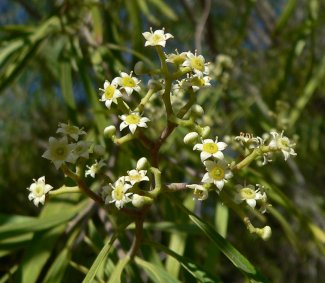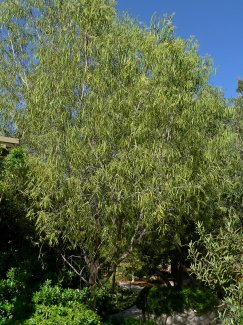Australia - New South Wales, - Queensland, - South Australia, - Victoria
Australian-Willow is an attractive evergreen, 30 to 35 feet tall and 20 feet wide, with an upright, oval silhouette. The main inner branches are composed of strong, wind-resistant wood and are directed upward, while the outer smaller branches are somewhat pendulous. This gives a decided weeping habit to older trees. Younger trees are more ovalshaped. This characteristic, combined with the thin, narrow, three to six-inch-long, olive green leaves which droop from the branches, gives the tree much the same effect as a Weeping Willow. Short panicles of small, creamy white, showy flowers appear in early spring and early fall. It is a hardy species in the Rutaceae family. It is distributed in dry areas with rainfall under 750 mm per annum. Its habitat is mainly mixed woodland communities, on lime-rich red clay loam or sandy soils with a variety of pHs. It is tolerant of 1–18 frosts per year, as well as drought, and if grown on well-drained soils can live for 25 years.
Used as an ornamental in Australia as a shade tree, and was introduced to California in the 1920's as a street and ornamental tree.

